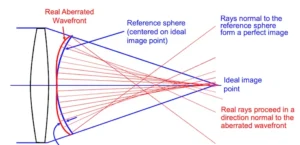Not all optical systems create images. In some systems, detecting light intensity is enough to meet an application requirement. For those systems, it’s possible to convert an optical signal into an electrical signal using electronics and photodiodes. In short, photodiodes are semiconductor devices used to detect and convert photons into an electric voltage (or current).
Photodiodes are usually fabricated using two types of semiconductor materials: a P-type (a semiconductor doped with a positive material) and an N-type (a semiconductor doped with a negative material). Sometimes, an i-type semiconductor (a semiconductor with no dopant) is added to the mix to create a P-i-N photodiode.

Medical Applications
So how are photodiodes use in medical applications? The one that is more common by almost everybody is that little clip that we get in our finger tip when we visit the doctor (although they can also be placed on an earlobe or toe). Those little devices are called oximeters. Their main objective is to measure the concentration of oxygen in our blood. They can help medical providers evaluate patients’ condition after surgery or how well they are responding to medication.
They physical principle is based on the fact that light is absorbed by oxygen. Oximeter usually use to different wavelengths (650nm, and 960nm), that’s a red and infrared wavelengths (although is you have a running watch you may have seen the use of green light). The idea is that deoxygenated blood has a higher absorption at 650nm and oxygenate blood has higher absorption at 960 nm.
The difference between the absorption of the two wavelength along with the rate of change caused by the blood pulse, can be used to calculate the percentage of oxygen in our blood.
5 Advantages of Photodiodes
Here are five advantages of working with photodiodes
They can operate at very high rates, so they are idea for optical communications
- They have very low noise
- Low cost!
- Long lifetime
- Low power consumption.
What are Photodiodes used for?
- They are used as light sensors due to their linear response
- You can find them in your remote controls and some smoke detectors
- Solar cells are a kind of photodiode (with a very large area)
- Barcode scanners in supermarkets
- Position detectors
- Medical instrumentation (e.g. oxymeters)
Photodiode vs Phototransistor
When looking for photodiodes, you probably also found a lot of information about phototransistors. What’s the difference? They are very similar and have the same function. Phototransistors can create an amplified signal but they lose some of the linearity that we have in photodiodes. Phototransistors tend to use a little bit more energy and can make more noise than photodiodes.
In general if you are detecting a very faint signal, phototransistors are going to be your first choice, but if the linear response is of importance in your application, then you may need to work with photodiodes.






